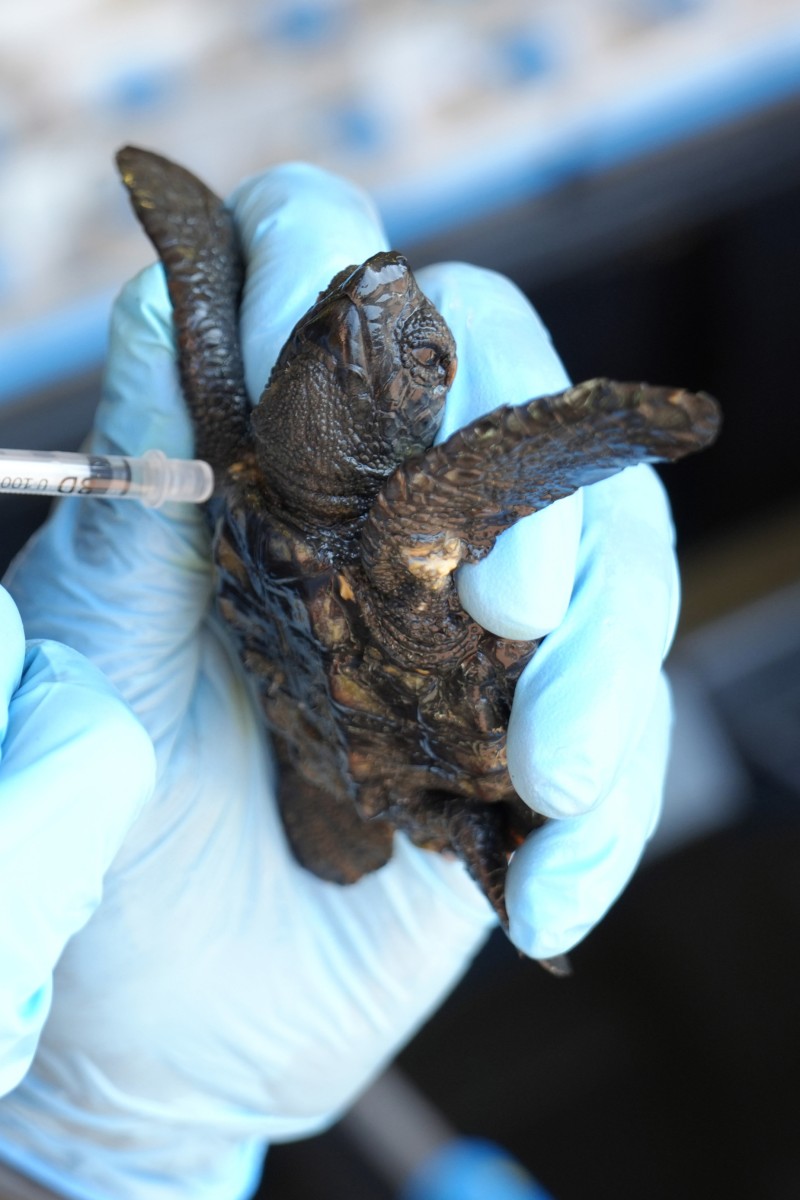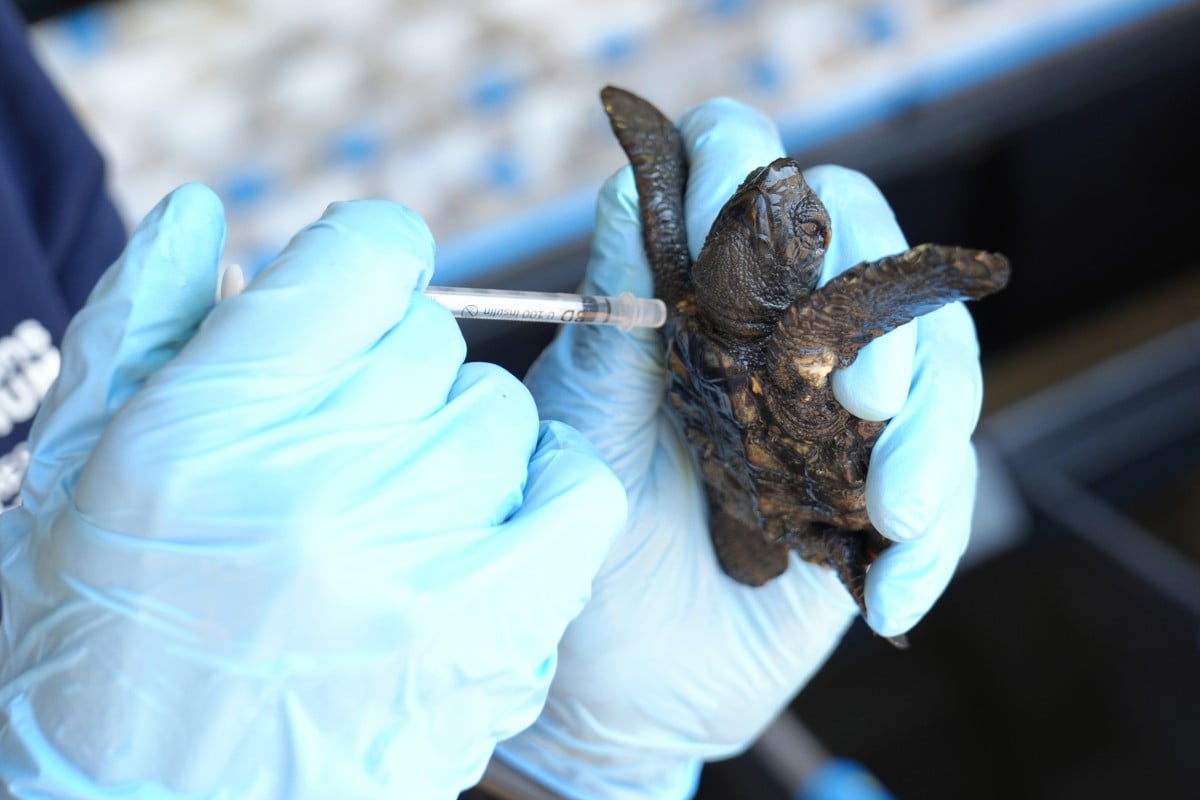
Your Voice: How to improve the waste reduction scheme, saving endangered sea turtles (long letters)
Students write about the importance of reducing waste to help the environment and the at-risk marine animals we need to save.
 Sea turtle hatchlings are raised and then released back into the wild as part of a conservation effort for the endangered animal. Photo: AP
Sea turtle hatchlings are raised and then released back into the wild as part of a conservation effort for the endangered animal. Photo: APHave something to say? Send us a letter using this Google form.
A fair, citywide waste reduction scheme
Jordy Lei Chun-fung, St Paul’s Co-educational College
Hong Kong’s citywide municipal solid waste charging scheme was not without controversy.
While it would have decreased the amount of rubbish produced – ultimately benefiting the environment – it also created a financial burden on families and the chance of illegal dumping. I will dive deeper into these arguments.
The scheme promoted the 3Rs: reuse, reduce and recycle. Due to how expensive the compulsory rubbish bags were, the scheme discouraged households and businesses from producing a large amount of waste, forcing them to consider how to maximise an item’s use. For example, aluminium cans and glass jars that are usually thrown away could be reused as flower pots and planters.
The municipal solid waste charging scheme would also have cut greenhouse gas emissions. A 2022 study published in the scientific journal Environmental Science & Technology revealed that China’s household waste management system is reducing climate change impacts, including emissions.
This is because less energy is needed to transport and process the waste.
Reducing waste can also reduce the amount of methane produced in landfills, which is the source for around 11 per cent of global methane emissions, according to the United States Environmental Protection Agency. It is clear that the scheme would be beneficial for the environment.
However, there are concerns about its potential negative consequences.
Firstly, the scheme created a financial burden. Each Hong Kong household would have to spend up to HK$55 per month on average on waste disposal, a significant amount for disadvantaged homes.
For example, senior citizens who collect cardboard on the streets earn only HK$30 a day, meaning the scheme would cost them at least two days’ salary every month. This is in addition to rent, electricity, gas and water bills, not to mention food and other necessities. The scheme poses an even larger burden on those struggling to make a living.
Secondly, a costly and confusing scheme results in cases of illegal dumping. According to the Seoul Institute, the city’s official think tank, the Volume-Based Waste Fee (VBWF) system in South Korea did see a reduction in waste generation and an increase in recycling performance.
However, to avoid paying fees, some citizens would illegally dump household waste in remote or abandoned areas or even throw it into public trash bins in regular, non-government-issued bags.
Your Voice: Banning electronics in schools and alleviating poverty
These issues can be mitigated here through targeted measures. Providing subsidies to underprivileged groups can help alleviate the financial strain, ensuring the system is equitable and inclusive.
Additionally, increased fines for illegal dumping may deter such activities and promote responsible waste disposal practices.
Given these considerations, I firmly believe the government should still implement a citywide municipal solid waste charging scheme, approaching it this time around with both environmental sustainability and social equity in mind to ensure it is a truly comprehensive solution.
Saving endangered sea turtles
Hayley Tang, St Paul’s School (US)
I am deeply passionate about animals, especially sea turtles. This passion was ignited during a snorkelling experience in Mexico, where I was captivated by the sight of these incredible creatures and inspired to take action for their conservation.
Our many Hong Kong public holidays offer us multiple opportunities to turn our travels into life-changing experiences that can help our world.
This belief drove me to intern at a rescue and conservation centre in Kosgoda, Sri Lanka, which boasts one of the world’s largest sea turtle populations. Seven species exist worldwide, five of which are found in Sri Lanka: green, loggerhead, olive ridley, hawksbill and leatherback.
From day one, my mentor and the general manager of the centre, Isuru Abbrew, taught me so much. I assisted with daily tasks such as cleaning tanks, feeding hatchlings and collecting beach debris. By the end of my experience, I was even leading tours for visitors from around the world who wanted to learn more about saving sea turtles.
Co-founded in 1978 by Similiyas Abbrew, Isuru’s grandfather, the Victor Hasselblad Sea Turtle Conservation and Research Centre is one of the earliest organisations of its kind in Sri Lanka.
“My grandfather’s commitment to preserving sea turtles inspired me as a child growing up in this environment,” Isuru said. “I feel a great responsibility to carry on this family legacy as the manager now.”
Sea turtles face constant danger worldwide, mostly from human activity including illegal fishing and egg poaching.
“The biggest threats are plastic pollution, fishing nets and coastal development,” Isuru stressed. To reduce these risks, we must educate ourselves and take action.
Your Voice: Why we must protect endangered animals
Every year, 5,000 turtles die from fishing nets in the waters around Sri Lanka, highlighting how urgent the centre’s mission is. I also rescued sea turtles during my internship.
On my third day at Kosgoda, I witnessed fishermen bring in four turtles caught in illegal fishing nets. Unfortunately, one was already dead. I was able to help Isuru and his team free two others by cutting away some of the netting and putting a wet towel over the turtles’ faces and eyes to calm them down.
Luckily, the two we freed were in pretty good shape and swam away after we released them into the ocean. The remaining turtle was badly injured.
I could see that the net had cut through his flipper to the bone, which was exposed. Isuru did not know if he would make it, so we brought the sea turtle back to the rescue centre and put him in an enclosure. We named him Lucky.
Every day, we applied a topical antibiotic cream on his injured flipper, and I fed him extra kelp to fatten him up. Lucky seemed to grow stronger each day up to my last. About a month later, the team released him.
We can all play a huge role in supporting sea turtle conservation. Isuru suggests volunteering in hands-on efforts at centres. You can also donate, reduce your use of plastic, educate others and advocate.
Awareness is the first step towards change for the sea turtle population.
